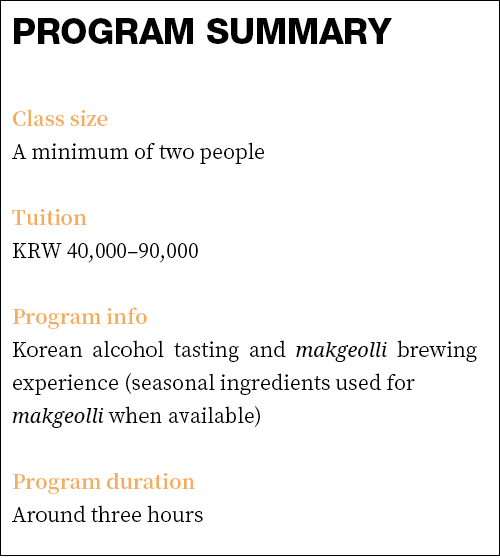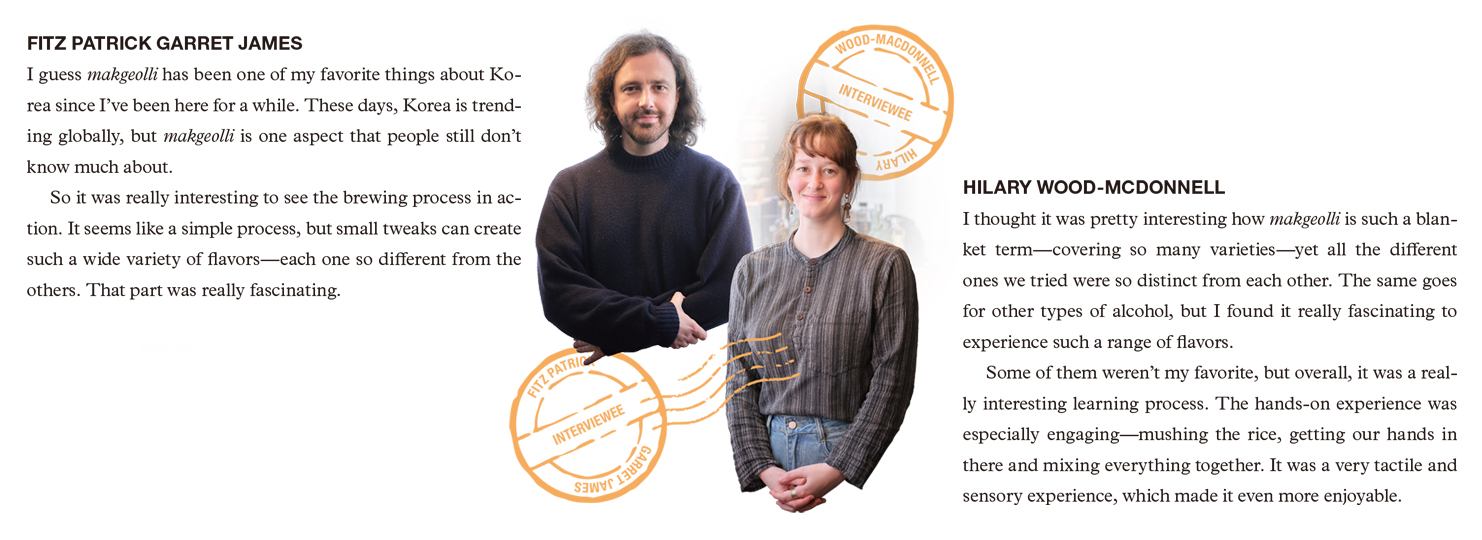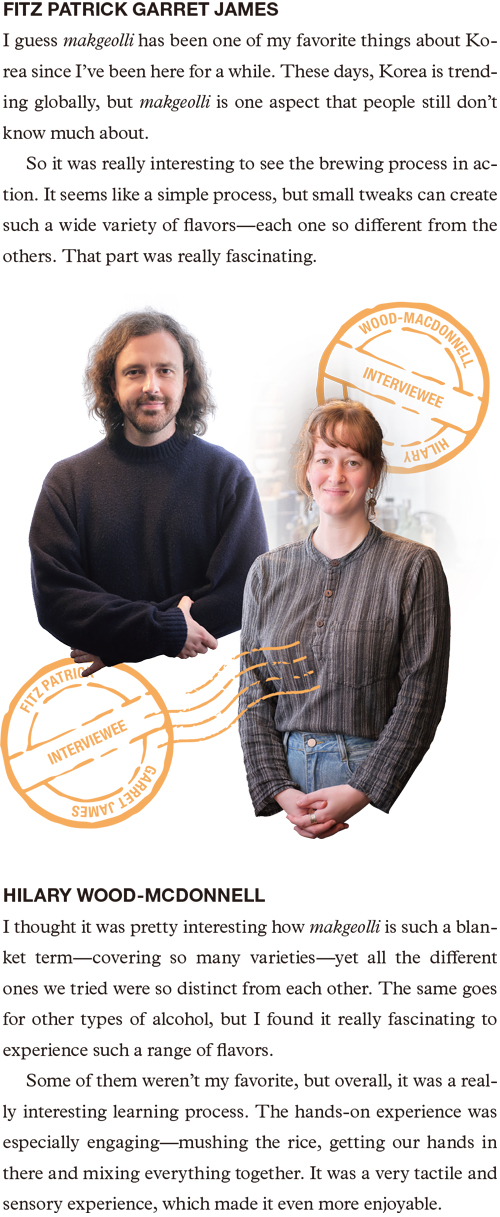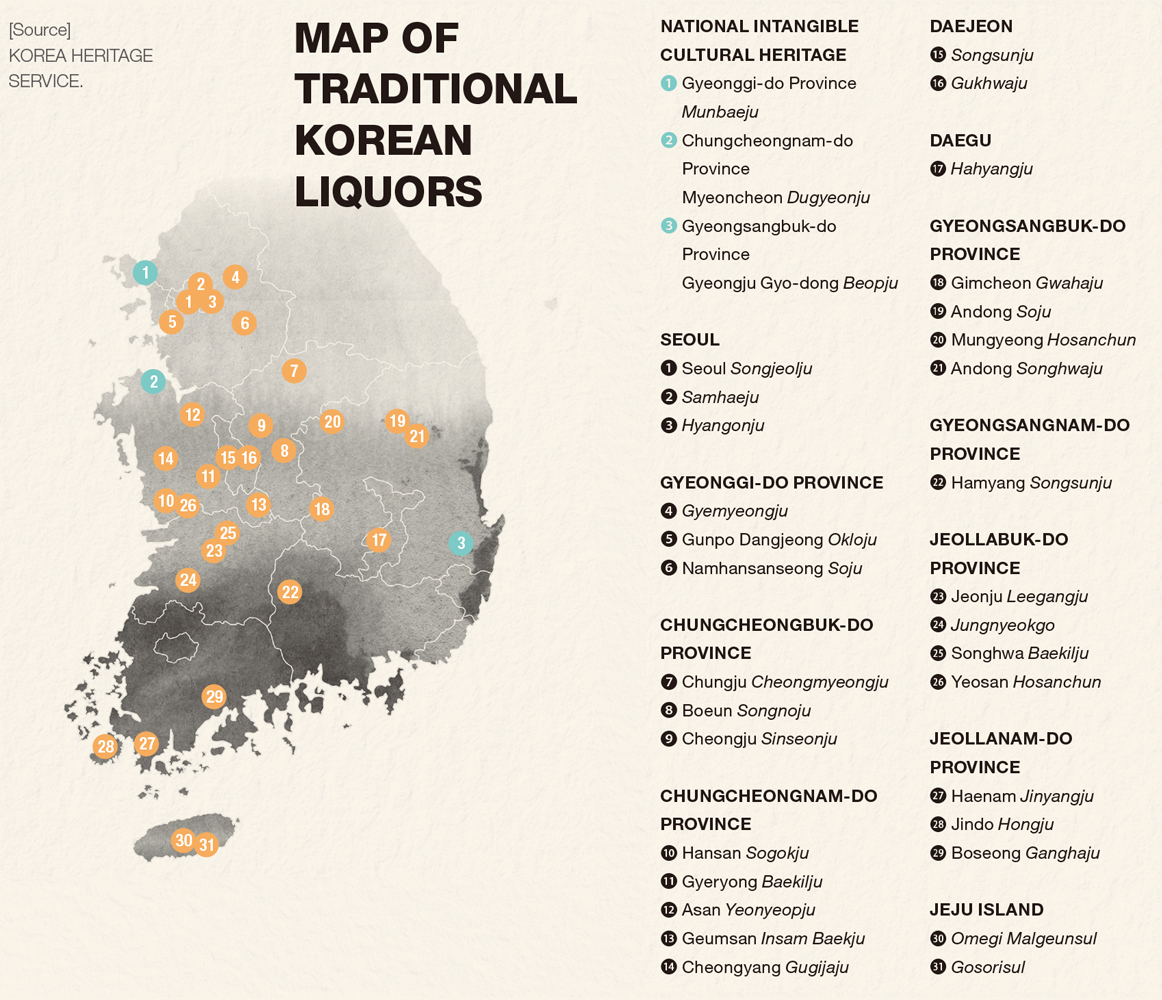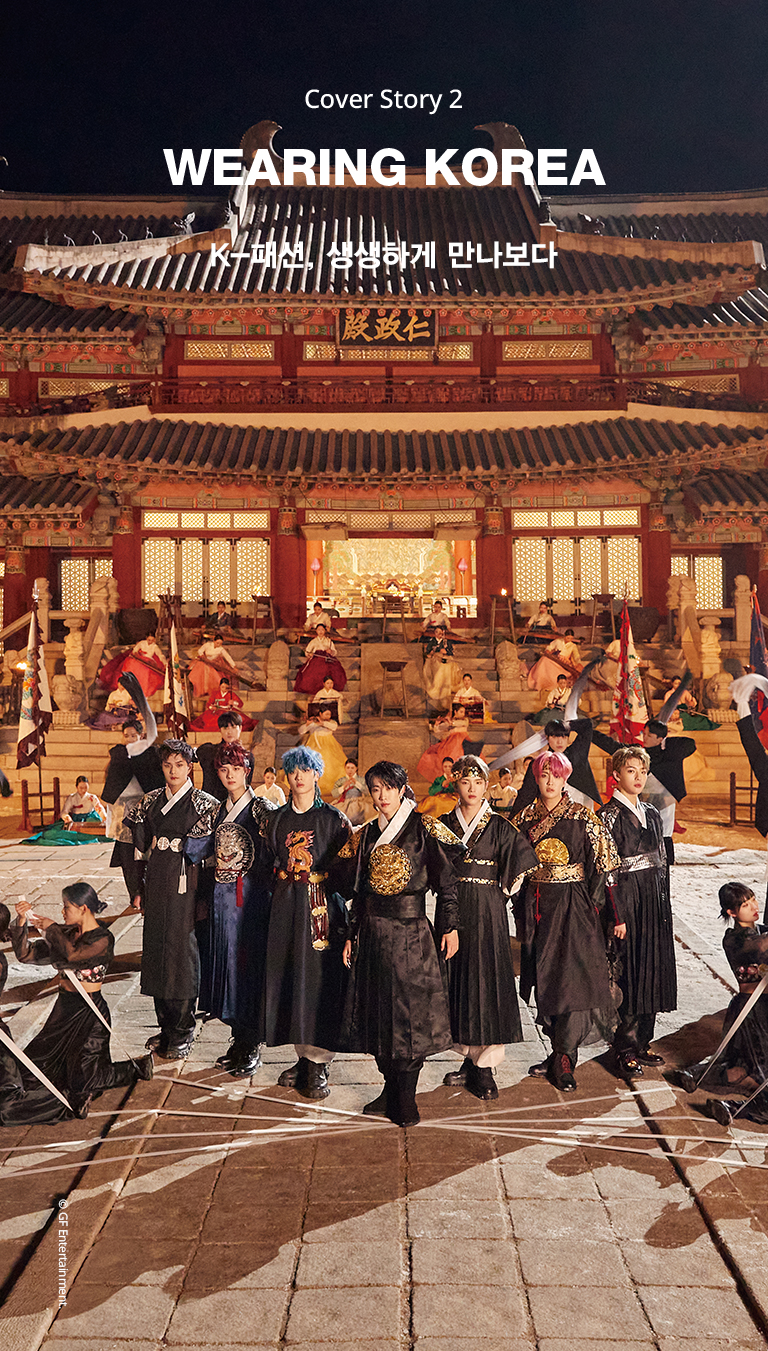
If you’re wondering what makes Korean alcohol so special, tune in to the stories of Korean alcohol enthusiasts who are promoting it around the world and joining homebrew clubs. The boundless appeal of Korean alcohol extends far beyond mere consumption.
한국의 술이 뭐가 그리 특이한지 궁금하다면, 그 매력에 흠뻑 빠져 세계에 한국 술을 알리는 사람과 그런 술을 직접 빚으러 모인 사람들의 이야기를 들어보자. 마실 것 그 이상의 존재로서 한국 술이 가진 매력은 무궁무진하다.
Writer. Sung Ji Yeon
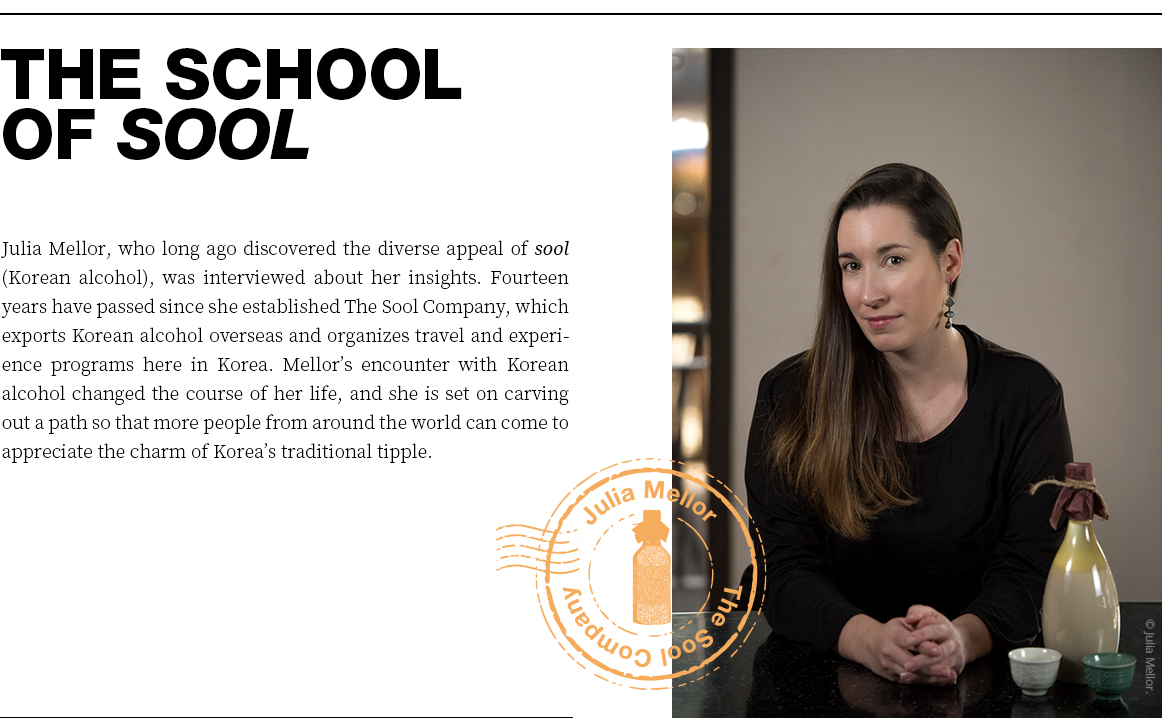
As a company dedicated to disseminating Korean alcohol around the world, we’re involved in various related projects. First and foremost, we organize tourism and experience programs. We also export Korean alcohol. We assist foreign companies that want a source of Korean alcohol but struggle with the language barrier. We connect European buyers with Korean alcohol and distribute the alcohol we’ve purchased. We also do business consulting for establishing breweries in other countries.
I was a big fan of wine, but 14 years ago, wine was really pricey in Korea. So I started looking into Korean alcohol and signed up for a program that sampled various kinds of makgeolli. I’d assumed that all makgeolli would taste the same, but that program was a revelation for me.
That made me curious about Korean alcohol, and I started looking for information. It turned out that rice, water and nuruk (fermentation starter) combine to make wonju, the precursor alcohol from which you get takju (unrefined rice wine), makgeolli (low-alcohol takju), cheongju (refined rice wine) and soju (distilled liquor). It was fascinating that all these different-tasting kinds of alcohol are made with the same ingredients and that they all had regional and family histories. I ran a makgeolli appreciation group and later converted it into none other than The Sool Company.
Products from Korea’s biggest brewers are sweeping global markets, but I was interested in something that had gotten much less attention: alcohol brewed using traditional methods. Whenever I organize workshops or attend overseas alcohol fairs, foreigners always tell me they wish they could buy these products at their local supermarket. That’s tough to accomplish because of inadequate infrastructure, so we set up a branch in Europe with the goal of building that infrastructure. Because of challenges with distribution, we currently only ship distilled alcohol overseas.
It’s the fact that Korean alcohol all derives from an alcohol precursor called wonju. I think that’s how Korean alcohol is able to satisfy such a variety of different needs. It’s really upsetting to hear people say they’ve tried all the alcohol at a convenience store and didn’t like any of it. Korean alcohol is so incredibly diverse that I feel supremely confident telling people there’s something out there that they’ll like.
Non-Koreans who return home after spending time here often talk about how much they miss big drinking parties and the food served there. I’d say that this vibrant drinking culture is one of the unique advantages of Korean alcohol.
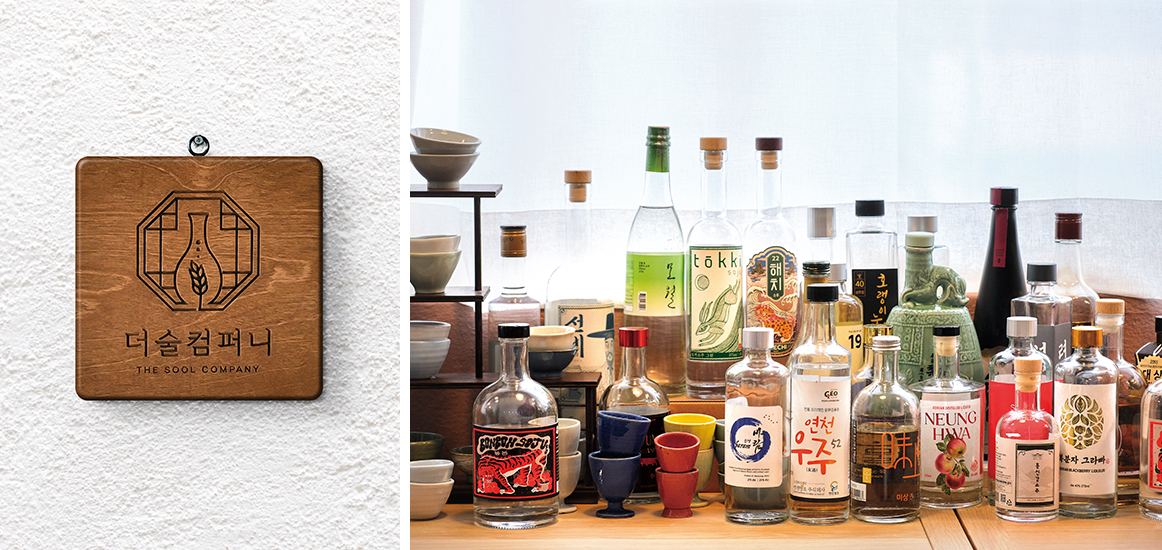
We need to avoid getting caught in stereotypes or trying to figure out “what foreigners would like.” You might assume that countries where whiskey is popular would prefer soju, but I’ve actually found that Korean fruit wines are popular there. Until we’ve heard from consumers, we don’t know which products are competitive. That’s why we need to keep experimenting and listening to feedback.
While I wouldn’t want to point to any single alcohol, I encourage readers who want to drink genuine Korean alcohol to try making their own. The ingredients are easy to come by. Although Korean chapssal or short-grain sticky rice is best, you can still make makgeolli with other kinds of rice. Nuruk can be purchased online. Anybody who samples homebrew will perceive the charm of Korean alcohol.
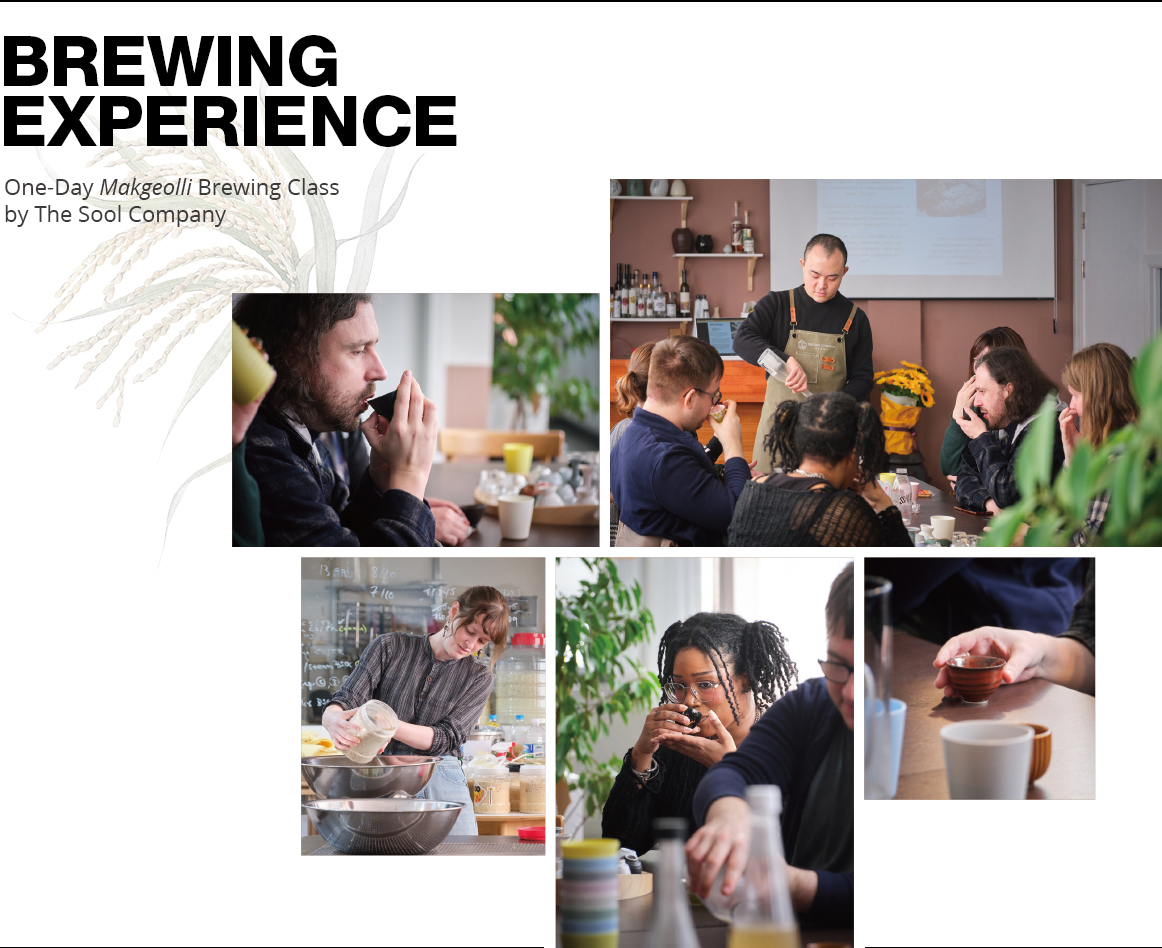
Once everyone has arrived at the brewery, the participants share where they’re from, why they enrolled in the program and what they think about Korean alcohol while sipping on a welcome drink.
When the brewing program starts, the instructor launches into a detailed explanation about Korean alcohol, including its etymology, categories, ingredients and fermentation. This orientation covers information that will come in useful when participants try making some booze at home. One tip is that adding more rice makes the flavor stronger and sweeter.
The first thing the instructor does in The Sool Company’s makgeolli-making program is cook rice. The rice is spread out over a cotton cloth, and participants crush the rice with sterilized equipment. After cooling, the rice is handed out and mixed with nuruk and water to make a mash that’s then transferred into a sterilized container. Throughout the class, the instructor gives general brewing advice that will aid participants who want to make alcohol on their own in the future.
After that, participants get to try out some of Korea’s variety of alcoholic beverages. They sample takju (unrefined rice wine), cheongju (unrefined rice wine), soju (distilled liquor) and gwasilju (fruit wines) and then share their impressions about the drinks.
